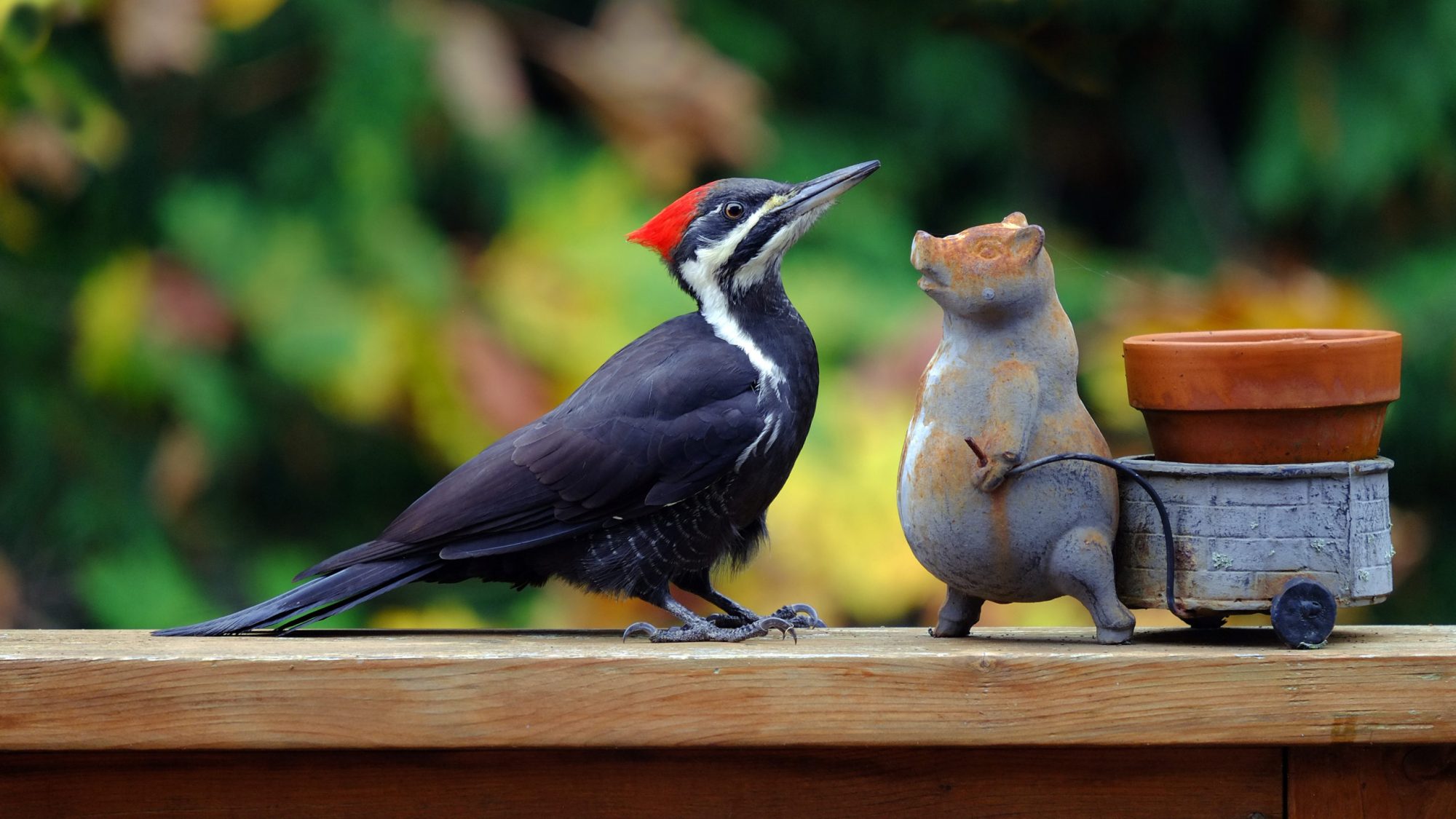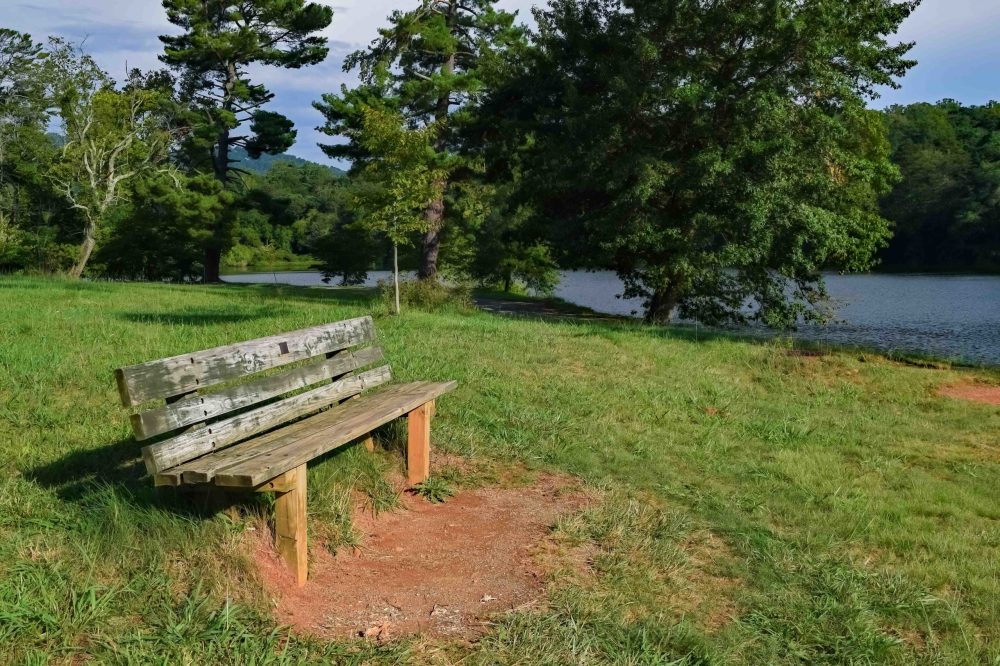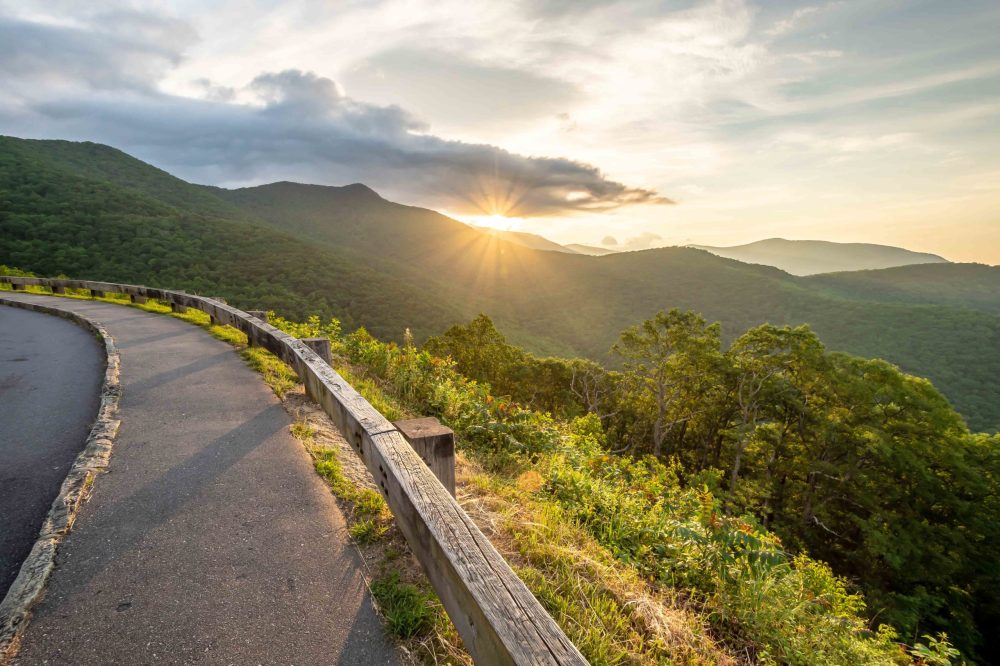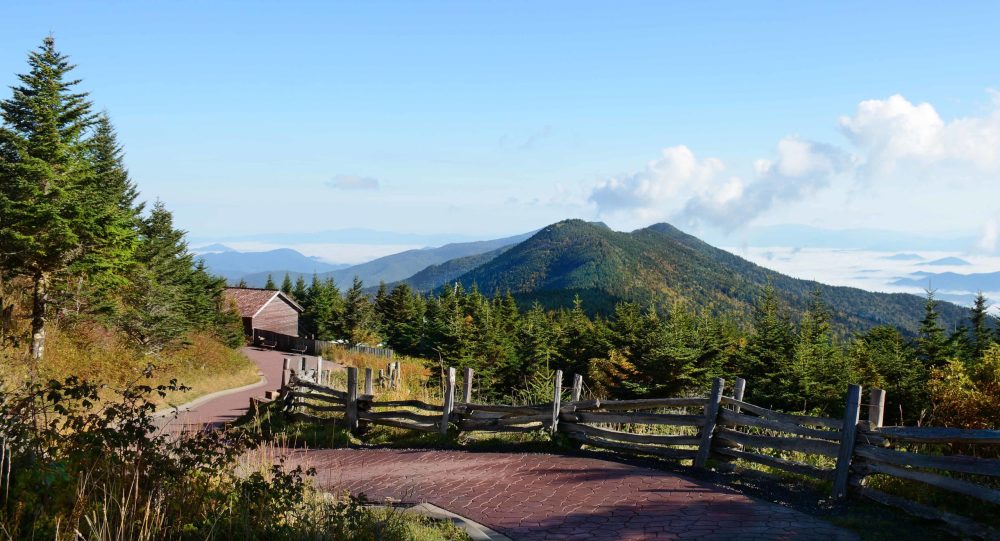Birding in and around Asheville, North Carolina

by Bill Sanderson, Ecotour Guide for Asheville Hiking Tours, with intro by Owner Jenny Gruhn
Birdwatching or “birding” is a popular way to become better acquainted with wildlife, since you can participate in this hobby while eating breakfast at your kitchen window, or waiting to get tires changed at the auto shop! Whether you live in the city, suburbs or country, there are always birds to identify, by sight or sound. There are endless ways to appreciate a lifetime of birding; maybe you wish to learn the common birds in your backyard using just a birdfeeder, or perhaps you’ll dig deeper to discover specific bird behaviors and habitats. Most importantly, birding is going to help you slow down to appreciate your surroundings and feel connected to the wild world.
Recommended birding supplies: We recommend a field guide (Petersons “Field Guide to Birds of Eastern and Central North America”), 8×42 binoculars (10×42 okay) and perhaps one of the free phone apps, such as Audubon for Eastern North America or Merlin for Eastern North America. Of course, water, snacks, appropriate footwear and a notebook are always a good idea. To learn more, take advantage of the resources around Asheville, especially our local Audubon chapter, the Elisha Mitchell Audubon Society, which regularly hosts free bird walks open to the public. Wild Birds Unlimited is a lovely store where you can purchase field guides and birdfeeders, etc. Here is a link on the Wild Birds Unlimited website which lists common birds around Asheville, for each season, to help get you started.
One of our ecotour guides and bird specialists, Bill Sanderson, put together the top birding locations in and around Asheville, NC. You do not have to travel far to see an abundance of species, particularly during spring or summer mornings:

Park Bench at Beaver Lake Bird Sanctuary in Asheville, NC
1. Beaver Lake Bird Sanctuary
The Beaver Lake Bird Sanctuary is an 8-acre wetland in north Asheville which was established in 1988 by the Elisha Mitchell Chapter of the Audubon Society. Since its inception it has grown to nearly ten acres of protected marshland adjacent to the 50+ acre Beaver Lake. The sanctuary features a handicapped-accessible boardwalk with several viewing decks to that birders can glass the lake, walk quietly through the mixed conifer/lowland deciduous forest, or pause along the several small creeks that feed the lake.
The sanctuary has an official checklist (usually available gratis at a small kiosk near the parking area) with over 220 species listed as having been observed here. Winter months bring a diversity of waterfowl, along with the usual local residents such as Tufted Titmouse, Carolina Wren, Downy Woodpecker, and White-breasted Nuthatch. The most commonly seen waders are Great Blue Heron, but Green Heron are not uncommon skulking along the marsh edges.
The sanctuary truly shines, however, during the Spring migration period (roughly early March through mid-May). Every species of eastern warbler has been seen here over the years, with Blackpoll, Cape May, Yellow-throated, Common Yellowthroat, and Northern Parula being the most commonly seen. Warbling and Red-eyed Vireos, as well as Brown-headed Nuthatch, have become regular breeding species in recent years, and both Orchard and Baltimore orioles regularly nest along the lake margins, accessible by a walkway that completely circles the lake. As you walk you will be passing through the historic Lake View Park neighborhood, and see the urban planning and landscape architecture designs of John Nolen and Frederick Law Olmstead. It is said that Asheville’s native son Thomas Wolfe regularly swam in the lake.
How to get there: From downtown Asheville take Merrimon Avenue (US 25) north approximately 2 miles. After you pass the Fresh Market look for the sanctuary sign and a small parking area on your left. Parking is free, but a consider making a donation for sanctuary upkeep at the kiosk. The sanctuary is open from dawn to dusk, seven days a week.

Bridge at the Botanical Gardens in Asheville, NC
2. The Botanical Gardens at Asheville
The Botanical Gardens at Asheville is a 10-acre, non-profit botanical garden dedicated to the study and promotion of the native plants and habitats of the Southern Appalachians. It is adjacent to the heavily-wooded campus of UNC-Asheville, so from a birding perspective it offers a large, quiet patch of diverse mid-elevation habitat within the city limits of Asheville. Parking is free, and the gardens charge no admission (but donations are gladly accepted). There is also a nature-centric gift shop featuring the work of local artists and a beautiful variety of nature-inspired arts, books, and crafts.
The gardens focus on plants native to the Southern Appalachian bioregion, and include a large variety of trees, shrubs, vines, wildflowers, herbs, grasses, sedges, aquatic plants, ferns, mosses and lichens – approximately 600 species in all. This diversity attracts a large diversity of bird life, and the one-half mile trail which loops through the property will afford looks at many local residents, as well as summer breeding species such as Northern Parula, Rose-breasted Grosbeak, Scarlet Tanager, and Indigo Bunting. The large, old trees attract woodpeckers, including Red-bellied and Pileated, as well as Brown Creeper and Great-crested Flycatcher.
While there don’t miss the colonial-era Hayes cabin and springhouse, as well as the remains of earthworks, the site of the 1865 “Battle of Asheville” when Union troops unsuccessfully attempted to retake the city from Confederate control.
How to get there: From Downtown Asheville take Merrimon Avenue (US 25) north for approximately 1.5 miles to the traffic light at W.T. Weaver Blvd. Turn left. Pass the entrance to University of North Carolina Asheville (UNCA) at the traffic circle. Entrance to Gardens is about 0.2 mile on the right before the traffic light.

Blue Ridge Parkway Overlook near Asheville, NC
3. Blue Ridge Parkway, North from Asheville
Spring comes slowly to the high country, and Asheville is a great place to catch the spring songbird migration! The closest, as well as some of the best, locations are overlooks along the Blue Ridge Parkway, which slices across the southern and eastern edges of the city limits before heading northeast toward Virginia. If you are in Asheville between mid-March and mid-June, try the following route for a truly memorable morning of “birding the Blue Ridge.”
To begin your parkway migrant adventure, from downtown Asheville take I-240 East to the tunnel road exit. Take Tunnel Road (US 70) east for approximately five miles to the Blue Ridge Parkway entrance ramp. Head north on the parkway, and in less than a mile you’ll come to the Folk Art Center. Birding the parking lot of the center will fetch good looks at a wide variety of low-elevation species, such as titmouse, chickadee, White-breasted Nuthatch, Downy Woodpecker, Northern Parula, and Scarlet Tanager. If you are there before the Folk Art Center opens (which you should be…the best birding in the Spring is from dawn to approximately 9 AM), plan to stop there on your way back down to town for a look at wonderful museum exhibits of Appalachian culture and a gift shop packed with the finest crafts available in the area.
Continue driving north on the Parkway, stopping at each overlook you come to. Listen for the “dawn chorus” and you’ll be rewarded with eye-level looks at species such as Indigo Bunting, Blackburnian Warbler, Worm-eating Warbler, Chestnut-sided Warbler, and Black-throated Blue Warbler. Blue-headed Vireo and Scarlet Tanager are also common. Each overlook you come to will be a bit higher in elevation, and you may begin to notice that the leaves on the oaks and maples along the roadway are not as full as they were when you began your journey. This is the beauty of birding the Parkway…you can in one morning travel from early summer to late winter, and the birds present in those different microclimates will be different as well.
In about six miles you will come to a gap in the ridge with a road entering from the left side. Park in the obvious area along the forest and hike northward for a short distance on the Mountains-to-Sea Trail for looks at the local celebrity species, Cerulean Warbler. The first half mile or so of this trail will take you through numerous Cerulean breeding territories and most days you can see and hear them quite easily. By the way, the Mountains-to-Sea Trail (or MST) is North Carolina’s long-distance trail, stretching over 1,200 miles from high on the Blue Ridge Parkway south of Asheville all the way to Jockey’s Ridge State Park on the shore of the Atlantic Ocean.
Return to your car and continue north, this time stopping at the Bull Creek Valley Overlook, another excellent spot for Cerulean and well as Blackburnian Warbler and American Redstart. More tanagers and grosbeaks should be there as well, as well as an assortment of other warbler and vireo species. Along the way you will more than likely see at least one Wild Turkey feeding along the roadside.
Continue on in this manner, stopping and listening for new species, but don’t dawdle for the best is still ahead. Look for the sign (about ten miles past Bull Creek OL) for Craggy Gardens Picnic Area. Drive up this road and very shortly you will arrive at an intersection with a gated Forest Service road (FSR 63). Park off the pavement and walk past the gate and follow the road, looking and listening. This is a “sure fire” area for Canada Warbler, and Red Crossbills frequent the spruce and fir trees along the ridge. Winter Wren, Veery, Scarlet Tanager, and Rose-breasted Grosbeak are common, as well as both Black-throated Blue and Black-throated Green Warbler. Keep an ear peeled for the croaks and whistles of Common Raven overhead, as well as the high-pitched whistle of Broad-winged Hawks that nest in the dense evergreen canopy.
As you walk this road you’ll be losing elevation, so be mindful that you will have to turn around eventually and walk back…uphill. When you get back to your car you can continue on (to the left) to the Craggy Garden Picnic Area (tables, gazebo sheds, and a pit toilet). Birding in the picnic area, especially early in the day before the day users arrive, can also be quite productive. Take the trail (pass the toilet building) uphill approximately one-half mile to the crest of Craggy Gardens (bear to your right at the large log structure) for stunning panoramic views of the nearby ridges and valleys. Migrating hawks frequent this ridgeline, and in the Spring and Fall you will certainly see at least some catching the deflected updrafts along the edges of the ridges. During the Spring migration period Ospreys and Bald Eagles are not uncommon, as well as the accipiters – Sharp-shinned and Coopers Hawks. Peregrine Falcons are also seen here occasionally as they make their way along the ridge toward their breeding areas in the Spring of their wintering haunts in the Caribbean in the Fall.
Return to the log building, which was built in the 1930’s by the Civilian Conservation Corps, and then go through the “CCC Shed”, following the trail downhill toward the Craggy Garden Visitor’s Center. This section of trail takes you through a thick forest of laurel and stunted oak, home to Veery, Dark-eyed Junco, and Gray Catbird. Ruffed Grouse sometimes can be seen, or heard on their favorite drumming log deep in the forest below the trail. At the Visitor’s Center you will find bathrooms and a small ranger-staffed gift shop and information center, but once again you will be treated to stunning views of the surrounding ridges and valleys. Remember that the Visitor’s Center is on the Blue Ridge Parkway, so if time or energy prevents your taking the trail across the Craggy Gardens you can drive there in a few minutes by continuing north from the picnic area.

Mount Mitchell State Park, with view of Mount Craig, 1 hour north of Asheville, NC
4. Further North up Blue Ridge Parkway towards Mt. Mitchell, NC
If you still have time, continue north on the Parkway. This area is a protected watershed, so there are few overlooks, but those that are there are worth a stop. The low, squat trees, hobbled by winter storms and nearly constant winds, will host Dark-eyed Junco, Canada Warbler, and in the open slopes, Indigo Bunting.
In another eight or so miles you will arrive at the entrance to Mount Mitchell State Park, another excellent birding destination. Park entry is free and there is a restaurant, snack bar, gift shop, and small museum. Several trails extend out from the center of the park, which hugs the upper slopes of Mount Mitchell, which at 6,684 feet is the tallest mountain east of the Rockies. If you haven’t yet seen Red Crossbill, pay attention for their thin, reedy calls as they crack the small Fraser Fir cones in search of the seeds which they relish. Dark-eyed Junco and Brown-headed Nuthatches are also common in these high-elevation conifers, and glance occasionally skyward for passing hawks and falcons.
